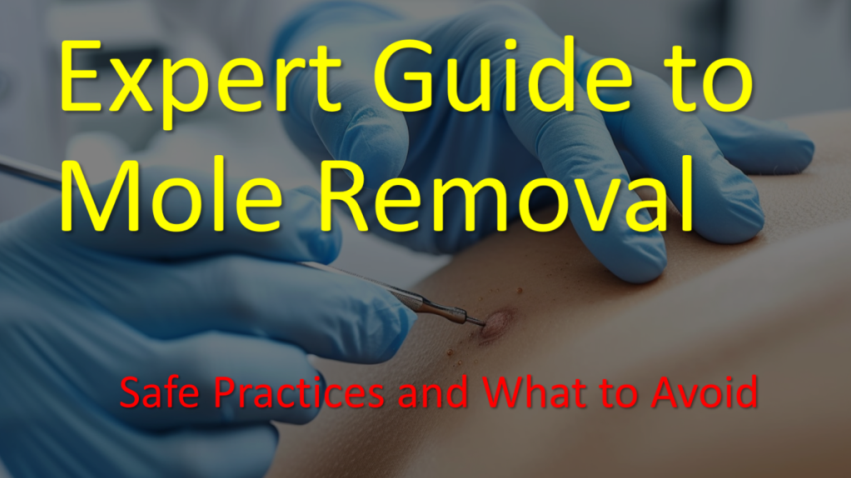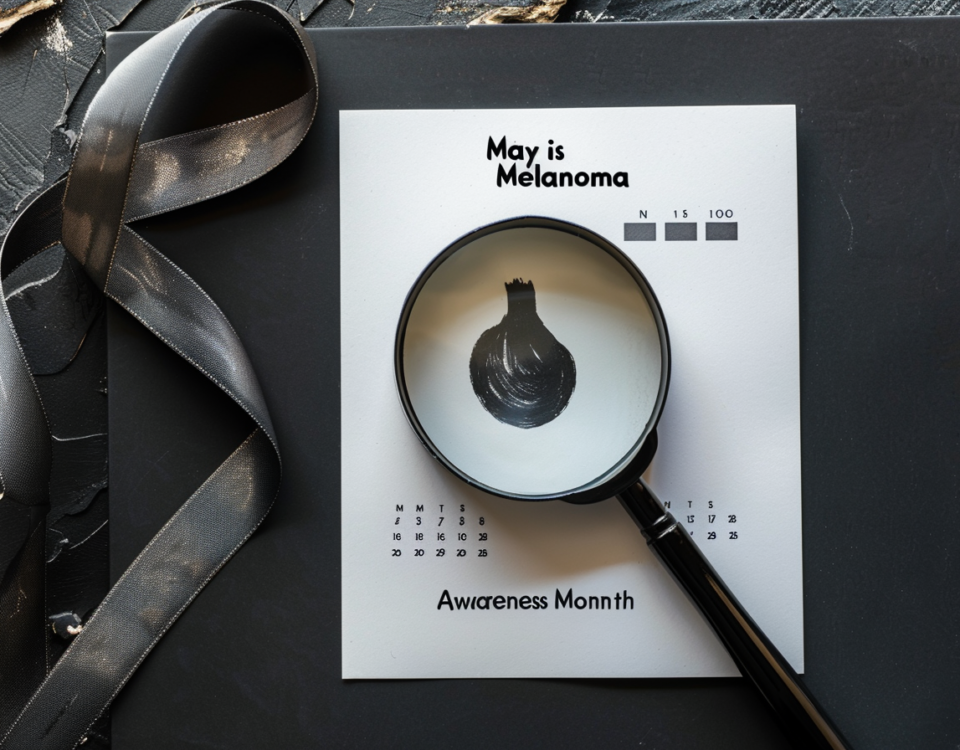
Recent Advances in Botox Injection Techniques: A Personal Journey
23rd January 2024
Expert Advice to Get the Most Out of Your First Aesthetic Consultation
9th April 2024Expert Guide to Mole Removal: Safe Practices and What to Avoid
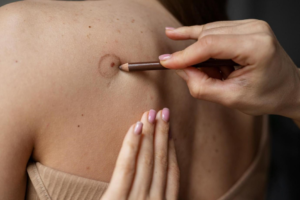
A mole spotted for mole removal.
If you are considering the removal of one or more of your moles, then this article is a must-read, as it can even save your life. Mole removal is a very popular skin treatment provided by almost all clinics, but it deserves a bit more contemplation. Before deciding to have your moles removed, I want to highlight some useful considerations.
1. “Mole Removal”:
There is already a diagnosis in this term: mole. What is a mole? A mole or nevus has a melanocytic origin, just like the dangerous melanoma skin cancer. So, when you think about ‘mole removal,’ make sure that the diagnosis is right. Whoever performs the mole removal should be able to diagnose it correctly first, which is not always easy or straightforward. I have seen cases when a melanoma was removed with an ablative laser and without histological verification. The next things the patient noticed were the metastases or the spreading tumour.
Conclusion: Mole removal should be performed or initially checked by a dermatologist first in a skin consultation.
2. Reason for Mole Removal:
There are multiple possible reasons for mole removal: an unsightly mole, an annoying lesion, frequent irritation, or a suspicion of a malignant transformation. These reasons weigh differently when we make pro-con mole removal decisions. For example, a small blemish on the chest that you don’t like is not a good enough reason to risk a keloid, which is overgrowing and disturbing scar tissue. A suspicious lesion at the same location has to be removed without hesitation. The chest is a high-risk area for abnormal healing (keloid formation).
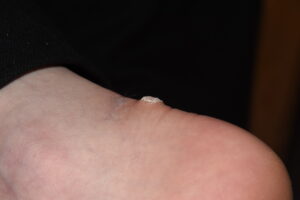
A viral wart. Removal with cryotherapy.
3. Location of the Mole:
Different parts of the body have different healing potentials. Generally, the face heals well and quickly, but it has a very high cosmetic significance. The worst healing potential on the body is the triangular area on the chest, with the highest chance of keloid formation. The back is an area where the skin is very thick due to the strong forces on the skin every time we bend forward, and it has to be considered when making decisions.
4. Photography before Skin Treatments:
Photography before any skin procedure has the utmost importance. WARNING: if anybody plans to do any skin treatment on your body (whether it is a mole removal or any cosmetic treatments like dermal fillers, laser, radiofrequency, or anything) without photography, leave the place immediately. Taking pictures has medico-legal importance and shows that they care and are willing to learn from their work, check before-afters, and other possible uses.

Photography saved this patient’s life by revealing the growing, changing lesion
5. Mole Removal Method:
There are different methods for mole removal. The most suitable one should be selected based on different factors, such as the nature of the lesion, whether it is flat or elevated, the location, histology needed or not, etc. If the lesion is a mole and it is flat and looks asymmetrical, the method to use is excisional biopsy with a narrow safety margin followed by histology analysis. Shave biopsy can also be used to remove suspicious lesions. Ablative removal methods that destroy the lesion entirely, such as laser, cryotherapy, and electric cauterization, should be used only carefully in expert hands who are experienced enough to distinguish a benign lesion from a potentially malignant one.
6. Safety Margin:
Specific lesions require a safety margin when removed. When we remove moles, we typically leave a small free margin around the lesion, so there is nothing left back with the potential to regrow. When inadequately removed, moles may grow back, and they can look ugly and develop into pseudo-melanoma, which causes some headaches for clinicians and pathologists alike. With an ablative method (laser, cryo, cauterization), the extent of the safety margin is unclear.
7. Histology Analysis after Mole Removal:
In every case, histology analysis should be performed when there is the slightest suspicion about a skin lesion being malignant or the lesion’s nature is unclear. It will reveal the final diagnosis, and it can determine whether there is any further action needed or not.
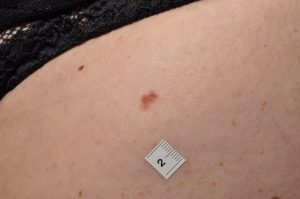
Histology revealed the true nature of this lesion being a malignant melanoma
8. The Scar after Mole Removal:
There is a very simple rule here: any procedure that reaches the dermis (the second, thick layer of the skin) causes a scar. Procedures more superficial to this don’t leave a scar. So, small lesions such as viral warts, fibromas, and seborrheic keratoses can be removed without causing a permanent scar. If completely removed, any lesion extending into the dermis (most of the moles) leaves a permanent scar. Moles can be removed superficially with a shave biopsy, but in this case, it is most likely that there are remaining deeper cells with the potential to reappear.
9. Risks and Complications:
During the consultation process, understand clearly the potential risks and complications of mole removal, such as infection, recurrence, unsatisfactory healing (keloid, hypertrophy, pigmentation), or unintended ablative removal of a malignant tumour without histology, including the possibility when no procedure is done.
10. Aftercare:
It depends on the location and size of the scar, but generally, a fresh scar needs support and protection. The dressing should be kept on for a few days without getting wet. Avoid physical activity at this stage. After the removal of stitches (if applicable), a firm massage with cream or oil is recommended multiple times a day (the more, the better), followed by the application of a silicone liquid or tape. Scars need UV protection for 18 months post-procedure.
Conclusion:
In conclusion, mole removal, while common, is not a decision to be taken lightly. It involves considerations regarding diagnosis, location, method, and aftercare, each with its own complexities. To ensure the best outcomes, it is crucial to consult with a skilled dermatologist who can guide you through the process with expertise and care.
If you’re concerned about your moles or considering mole removal, I strongly encourage you to book a full-body mole check with Dr. Bela, an experienced dermatologist. This comprehensive examination can provide peace of mind and ensure that necessary procedures are performed safely and effectively. Remember, early detection and professional care are key to maintaining skin health. Contact Dr. Bela’s clinic today to schedule your skin consultation and take the first step toward safe and informed mole removal.

